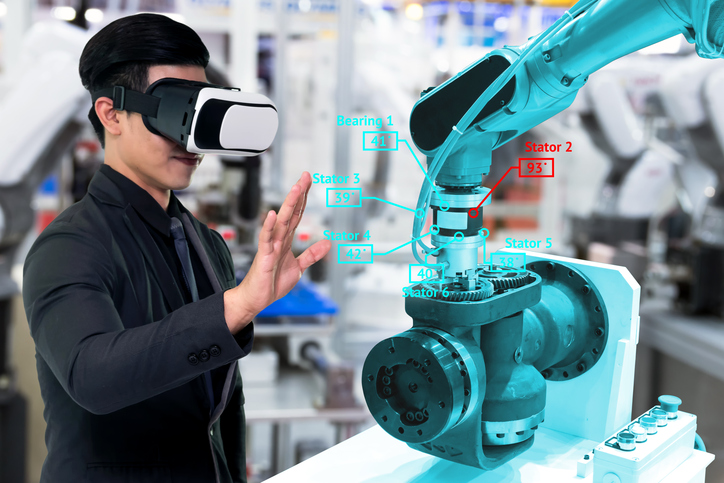How Virtual Reality Can Help Inform Industrial Robot Design

Virtual reality (VR) gets a lot of attention in today’s technological landscape, especially in regard to consumer products. Typically, the radical potential of VR in its end-form is what captures imaginations and fuels interest in the technology. But while VR may be limited in form today, it still has many practical uses, particularly in the design of industrial robotic systems.
VR can be used in the simulation of proposed robotic systems. In this way, robot integrators can show proof of concept and proof of design before building and installing a system to ensure there are no defects built into the system. Robot simulation software already exists, VR technology takes the existing capabilities of this software to new heights.
How Virtual Reality Leads to Better Industrial Robot Designs
When VR is incorporated into robot simulation software, it creates a totally immersive simulation environment for more accurate and detailed study of the proposed robotic solution, which in turn can lead to more effective industrial robot design.
With VR displaying the robotic solution, different teams of engineers can virtually walk around a robotic system and work together to fine-tune the design and ensure the proposed solution meets or exceeds expectations. VR technology facilitates collaboration between design engineers to promote innovation and more productive robotic systems.
How End Users Benefit from Virtual Reality in Industrial Robot Design
End users with access to an integrator’s VR simulations can also virtually walk around the proposed robotic system. While this gives an end user a much clearer idea of the robotic system to be installed in their facility, it also allows them to double-check the engineers’ work and make any enhancements based on an intimate knowledge of the application and work space.
Oftentimes robot integrators can come up with design solutions that an end user wouldn’t have ever considered possible. In this instance, an end user can be assured that a highly complex or unique robotic system will perform as intended and provide productivity over the long-term investment.
VR technology considerably improves the quality and accuracy of robot simulation. For proof of concept and proof of design, VR allows for unprecedented insight into robot design before a single component is assembled or installed. End users benefit from gaining a comprehensive, collaborative view of proposed robotic systems.
To learn more about this technology, read about Genesis Systems Group’s 3DG Environment for complete immersion into industrial robot design – the only VR simulation of its kind.
Posted in Robotic Applications